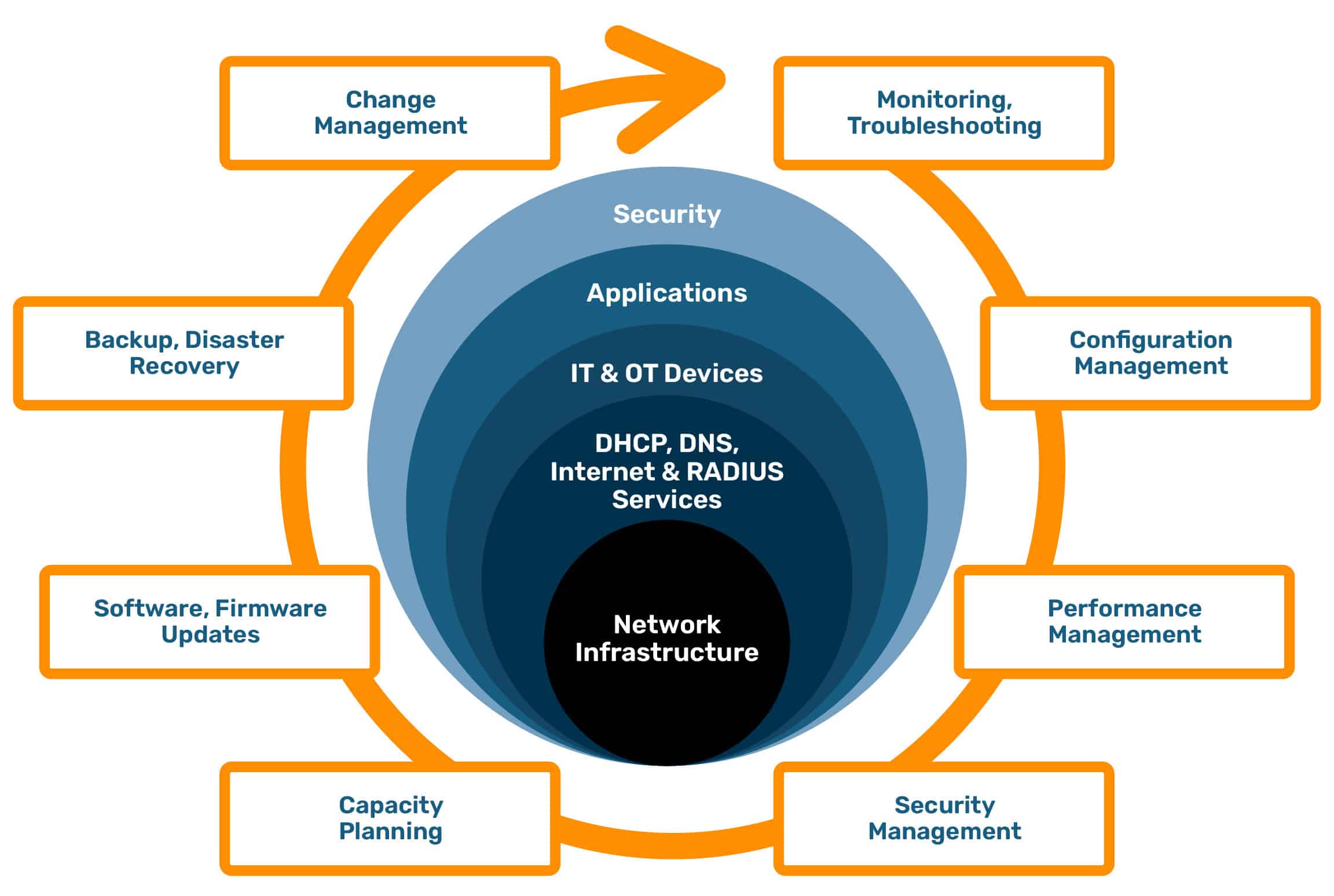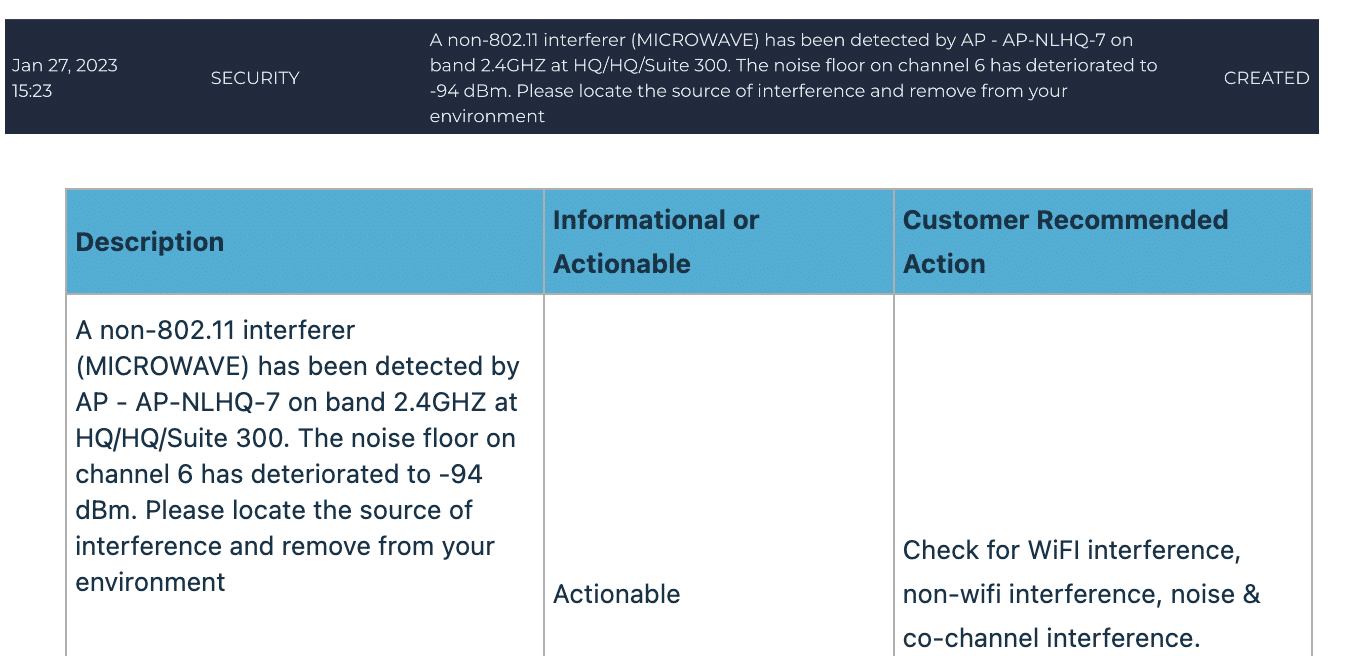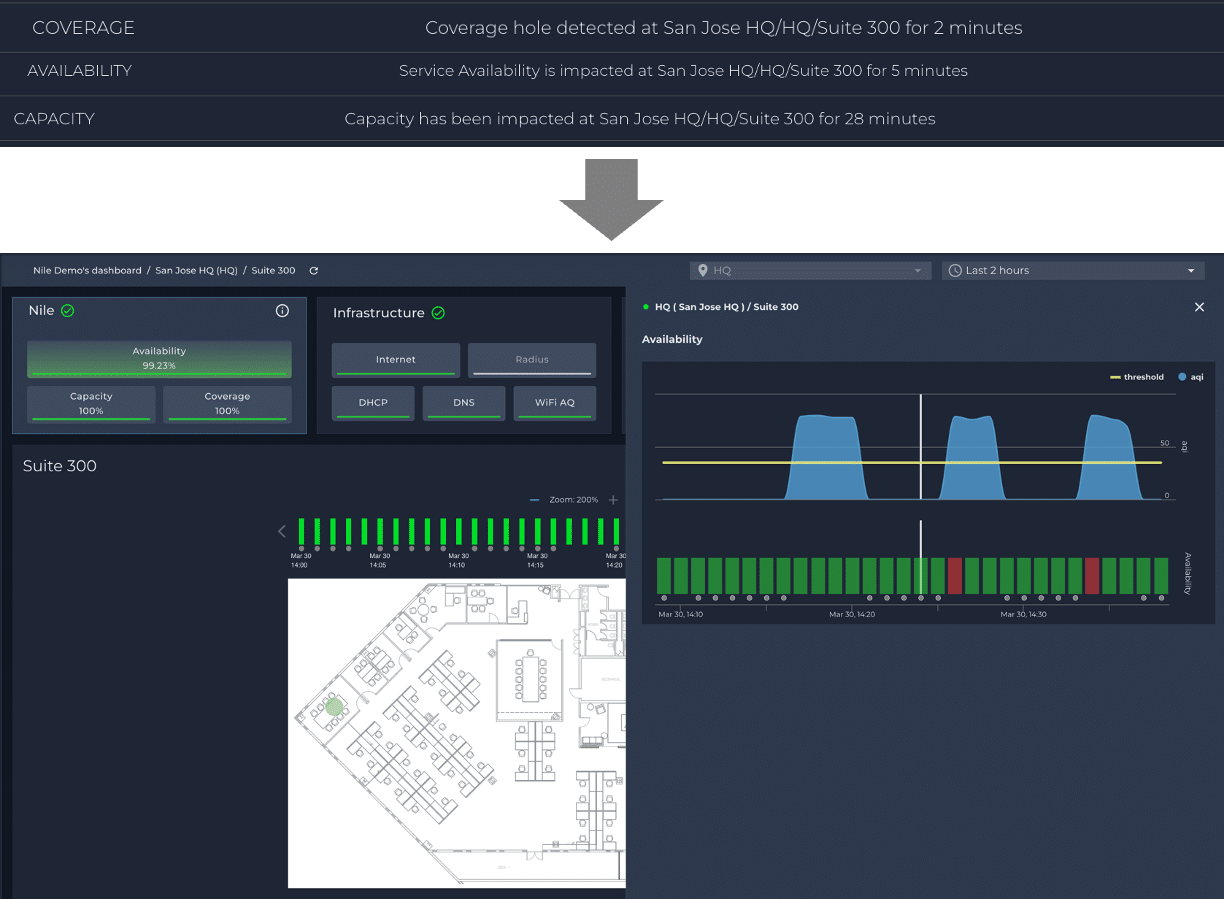Share Via
What burdens enterprise network IT teams?
A typical enterprise IT organization consists of multiple teams, each focusing on different IT domains (see figure 1). Networking infrastructure is the core domain, upon which services and applications in all other domains are built and delivered to end users.

Figure 1: Enterprise IT domains and network operations
Factors that increase the burden on IT operations
Traditional means of providing network connectivity where the customer owns all the responsibility to configure, maintain, and refresh all hardware and software components place an undue burden on IT operations. Here are a few factors affecting this:
Too many tools: Network IT teams use too many (more than ten) different tools, including open source and vendor tools to monitor the health of network devices and decipher logs. Often there are tools to monitor other tools–a sure sign that complexity has gotten out of hand.
Too much complexity: Configuring these tools and many network devices belonging to many vendors is quite complex, and requires deep networking expertise. To acquire this expertise, enterprises hire engineers with certifications that are in short supply.
Reactive and unscalable approach: Network IT teams jump into action only when someone complains or they receive notifications (network alerts) from the tools. A typical network management software tool deployed in an enterprise organization with about 300 APs and 20 switches can generate hundreds of thousands of notifications per month. Finding an alert that requires attention is almost impossible.
How does Nile Access Service reduce IT workload?
Nile Access Service shares responsibility with IT teams in designing and maintaining their network infrastructure, while also proactively analyzing network, user, and device performance. With the Nile production engineering team automatically resolving potential feature issues behind the scenes, there is no need to sift through a stream of alerts and logs.
Nile is shifting the network from a managed, monitored, and protected entity to something that simply delivers outcomes in the form of guaranteed service levels. While doing so, NaaS by Nile eliminates the need for multiple tools by relying on automation across the enterprise network hardware, cloud orchestration, and lifecycle management services.
Eliminating multiple network management tools
NaaS by Nile replaces many tools used by network IT teams with a centralized dashboard in the Nile Portal. The portal delivers real-time insights to the IT operations team about overall performance across three different perspectives: availability, coverage, and capacity that correspond to the Nile Access Service SLAs.
- Availability shows the overall uptime for network connectivity.
- Coverage shows the ability to deliver video-quality Wi-Fi signal strength.
- Capacity shows how well the network is meeting the demands of users and devices.
From a reactive to a proactive approach for resolving network issues
From the moment the network is deployed, the Nile service automatically starts self-tuning with closed-loop automation. Potential issues in the network such as equipment health, software issues, link failures, and environmental conditions are proactively detected and resolved through automation. If they cannot be resolved, the Nile production engineering team automatically assigns trouble tickets to involve Nile support engineering to initiate a resolution.
Any issues that are resolved manually are translated to automation for all Nile customers to take advantage of in future iterations when similar problems are detected. With end-to-end automation, Nile Access Service eliminates the need for constant manual monitoring of alerts, logs, and events. This proactive approach reduces the number of alerts from hundreds of thousands to just a handful a month.
Monitoring for wireless network availability, coverage, and capacity
While monitoring for availability, coverage, and capacity, Nile Access Service shields administrators from troubleshooting traditional networking issues such as those related to routing/switching, CPU/memory, and network element failures.
For example, if an access switch goes down, all the access points connected to the access switch are typically affected. Traditional network management systems will continuously bombard administrators with events for access points and switches, link failures, and link disconnects until the issue is resolved.
Instead of raising so many different notifications, Nile service analyzes the overall impact on the guaranteed performance agreement. It generates a single summarized notification along with the root cause only if there is an impact to the service.


Figure 2: The Nile service monitors itself for availability/coverage/capacity.
Replacing notifications with actionable recommendations
The Nile service is designed to provide a clear root cause and actionable recommendations within the Nile Portal. These recommendations have the following information:
- Root cause analysis on why the condition happened.
- Where and when did the condition occur?
- What is the impact and what actions should the IT team take?

Figure 3: Nile Access Service notifications
Self-evaluating performance with physical and virtual sensors
Nile Access Service is powered by hardware and software components that are designed from the ground up for delivering guaranteed performance across Wi-Fi and wired access networks.
Every layer of the Nile service comes integrated with physical and virtual sensors to enable the network to self-evaluate its performance, capacity, latency, and application access. These sensors act as eyes and ears to provide a 360° view of the network 24×7. They not only monitor network elements but other network services such as DHCP, DNS, RADIUS, and WAN.
Nile network elements and sensors continuously stream the collected data to the cloud for real-time analysis and proactive monitoring. The Nile cloud deploys softbots and AI/ML models that analyze and draw inferences from the data. This allows it to automatically fine-tune the service. If and when something requires a human to visit the site to take action, the Nile service will automatically create a ticket and notify the customer. The service sends notifications via email or any webhook-supported application such as Slack.
Conclusion
Conventional network operations increase the burden on IT teams with numerous dashboards and thousands of alerts. Nile Access Service eliminates the burden on IT operations by sharing responsibility for network infrastructure and proactively driving closed-loop automation to ensure guaranteed performance, coverage, and capacity. It provides intelligent and actionable recommendations only when network conditions adversely impact service levels. In upcoming blogs, we will discuss how the service is designed to reduce the burden on IT teams working in other domains such as DNS, DHCP, applications, IT/OT devices, and security.
Share Via



